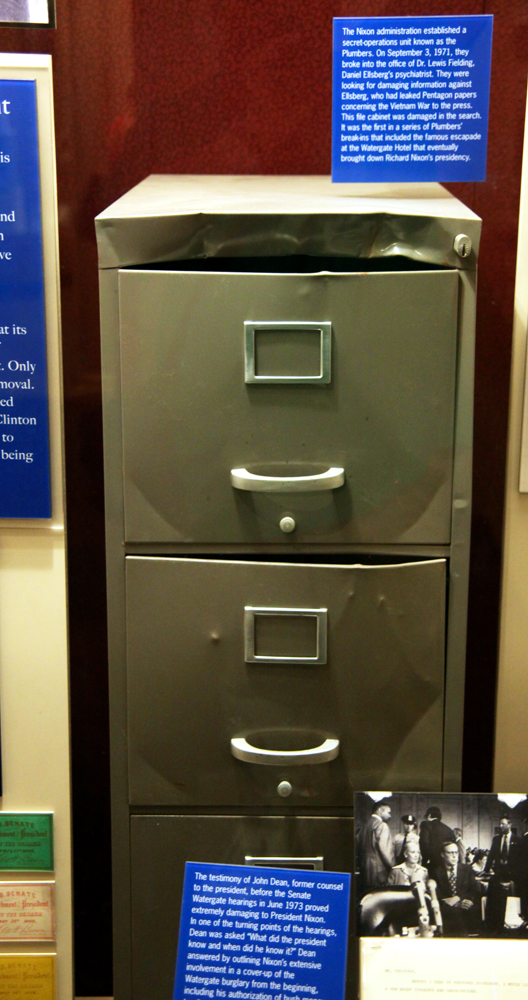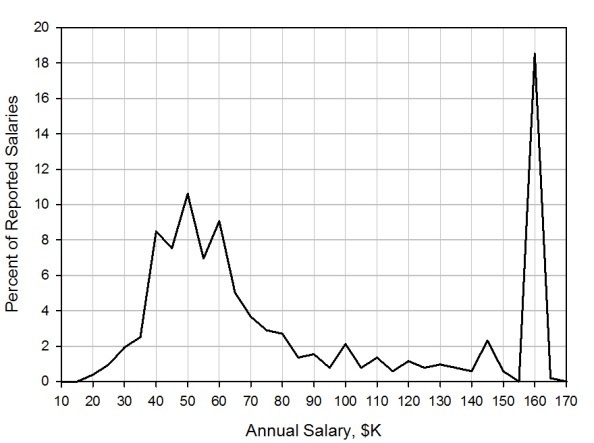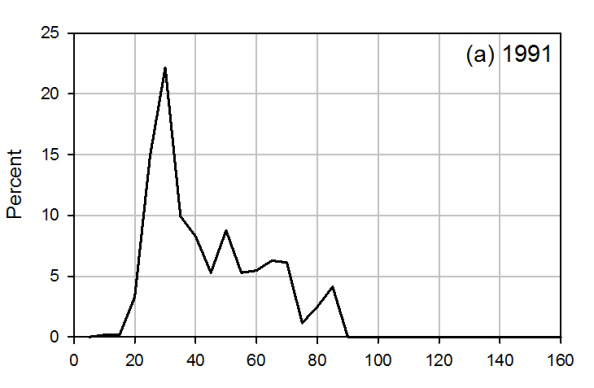Category: Law
“Kiwi up on China baby talk”
That is one of today’s WSJ headlines, from Nicole Wong, here is the scoop:
“New Zealand exports milk products, which is what China needs and wants,” said Anders Faergemann, who helps manage $69.1 billion at PineBridge Investments and is buying the New Zealand dollar. Mr. Faergemann said that it is likely that a relaxation of China’s one-child policy will result in more demand for New Zealand’s products over time.
“If you can export more to a growing country the size of China, your currency is in a good spot,” he said.
The kiwi wasn’t the only asset to benefit from the policy change: In China, shares of baby-formula producers, piano makers and tutoring companies jumped following the news.
And that is what greater liberty looks like.
The FDA and International Reciprocity
Bacterial meningitis causes swelling of the membranes covering the brain and spinal cord. In the United States the disease kills approximately 500 people a year, often within days of infection. Survivors can have permanent disabilities including paralysis and mental disabilities. Since March seven cases of the type B strain have been diagnosed at Princeton University, with one case just last week. A vaccine exists and is available in Europe and Australia but the FDA has not permitted the type B vaccine for use in the United States.
The Centers for Disease Control and Prevention, however, has lobbied the FDA and they have now received special and unusual permission to import the type B vaccine. Following the CDCs recommendation, Princeton University has agreed to administer and pay for the vaccine for any student that wants it.
It’s good that the FDA has lifted the ban on the type B vaccine but why should Americans have to wait for the FDA? Americans living in Europe or Australia can be prescribed the vaccine so why not here? I believe that Americans should have the right to be prescribed any drug that has been approved in Europe, Australia, Canada, Japan or other developed nation.
Indeed, as Dan Klein and I wrote at FDAReview.org, international reciprocity of drug approvals is simple common sense:
If the United States and, say, Great Britain had drug-approval reciprocity, then drugs approved in Britain would gain immediate approval in the United States, and drugs approved in the United States would gain immediate approval in Great Britain. Some countries such as Australia and New Zealand already take into account U.S. approvals when making their own approval decisions. The U.S. government should establish reciprocity with countries that have a proven record of approving safe drugs—including most west European countries, Canada, Japan, and Australia. Such an arrangement would reduce delay and eliminate duplication and wasted resources. By relieving itself of having to review drugs already approved in partner countries, the FDA could review and investigate NDAs more quickly and thoroughly.
As has now become clear, international reciprocity is not just about choice it can also save lives.
Will hospitals buy ACA insurance for their uncovered patients?
I had not thought of this angle before:
US hospitals are exploring ways to buy “Obamacare” insurance plans for their sickest and poorest patients as they strain under the weight of tens of billions of dollars in uncompensated costs from the uninsured.
But the move is opposed by the Obama administration and insurers, who fear it could add to the turmoil surrounding the new healthcare marketplace.
…Both the White House and insurers are concerned that if hospitals started paying for insurance for certain chronically ill patients, it will skew the insurance risk pool for the new healthcare exchanges, created under the Affordable Care Act. The exchanges need to attract at least 2.7m healthy and young people, out of 7m that were estimated to join the exchanges by March 2014, in order to keep monthly premiums low.
Ms Hatton said the prospect of buying health insurance for patients has become especially important in Republican-controlled states that have decided not to expand the federal insurance programme for the poor, known as Medicaid.
From the FT, here is more.
American schools seem to be getting safer
From Greg Toppo:
It’d be easy to conclude that school has never been a more dangerous place, but for the USA’s 55 million K-12 students and 3.7 million teachers, statistics tell another story: Despite two decades of high-profile shootings, school increasingly has become a safer place.
…By nearly every measure, safety has improved and violence has dropped for students and teachers, according to recent findings issued jointly by the Justice Department and Education Department.
The data do not include post-2011, but still the overall trends, as outlined in the longer article, seem pretty clear.
Getting rid of old regulations is much too hard
That is the topic of my latest New York Times column, which is entitled “More Freedom on the Airplane, if Nowhere Else.” It opens with this example:
It is sometimes the small events that reveal the really big problems lurking beneath the surface. That’s the case with the Federal Aviation Administration’s recent decision to grant airlines the liberty of allowing the use of electronic devices during takeoff and landing.
You still won’t be able to call on your cellphone during those times, but, if the airline allows it, you will be able to read on your Kindle or play Angry Birds throughout the flight.
That’s the good news. What’s the deeper problem? Our new Kindle freedoms, however minor they may seem, show how hard it is to clear away the old, unnecessary regulations that are impeding the economy.
After all, the previous restriction on electronics during flights was broadly unpopular in a way that cut across partisan lines. Yet, for many years, the public’s complaints did not bring concrete change, mostly because of regulatory inertia. (If you’re worried about safety, by the way, the airlines can still, at their discretion, demand that these devices be turned off when deemed necessary.)
Here is another bit from the piece:
Many regulations, when initially presented, can sound desirable. The problem is that, taken in their entirety, excess rules divert attention from pressing issues like the need for innovation and new jobs.
Michael Mandel, an economist at the Progressive Policy Institute, compares many regulations to “pebbles in a stream.” Individually, they may not have a big impact. But if there are too many pebbles, a river’s flow can be thwarted. Similarly, too many regulations can limit business activity. When the number of rules mounts, it can become hard for a business to know whether it is operating within the law’s confines. The issue is all the more problematic when federal, state and local constraints all apply.
Our public sector is overregulated, too. For instance, the tangle known as government procurement has exacerbated problems with the Affordable Care Act’s health insurance exchanges. The required formal processes made it difficult to hire the best possible talent, led to nightmare organizational charts and resulted in blurred lines of accountability. It’s hard to turn on a dime and fix such problems overnight, no matter how pressing the need.
Read the whole thing.
Sentences to ponder
Prescription painkillers now kill more Americans than heroin and cocaine combined, according to the CDC.
That is from Andrew Sullivan.
How to fix (some of) the Obamacare mess
Ross Douthat writes:
…it does seem like there is a semi-plausible policy response to the rate shock issue, which wouldn’t roll back the ongoing plan cancellations but might make cheaper plans available to buyers going forward: Obamacare’s regulations could be rewritten to allow insurers to sell less comprehensive plans on the exchanges. This wouldn’t require doing away with every new regulation, or rolling back the pre-existing condition guarantee, which is what liberals argue the Upton bill currently being considered in the House would do. But it could involve heeding the recent hint from the University of Chicago’s Harold Pollack, a card-carrying Obamacare advocate, that perhaps in the wake of the last month’s developments the government should ”revisit just how minimal the most minimal insurance packages should be,” which in turn could open the door to allowing many more people to buy the kind of high-deductible catastrophic plans that the law currently allows insurers to only sell to twentysomethings.
These moves would not let everyone keep their existing plans, as the Upton and Landrieu bills aspire to do — but there is really nothing that the White House can responsibly do, given the law’s underlying design, that would resolve that problem. What partial deregulation would accomplish, though, is to allow some of the lower-cost plans the law abolishes to be actually revived and made available on the exchanges as “bronze” options in 2014 and 2015, rather than just temporarily grandfathered for a year or so outside them.
The post has other points of interest as well.
Should the U.S. destroy its stockpile of ivory?
Here is one of the latest developments in economic policy:
The US government hopes to send a crushing message to anyone involved in the illegal ivory trade — by decimating a 6-ton stockpile of seized elephant ivory.
In an announcement posted online, the US Fish and Wildlife Services (FWS) describes plans to “pulverize” a cache of ivory on November 14th. All of the ivory was obtained, the agency notes, from law enforcement efforts to crack down on trafficking over the last two decades. “Destroying this ivory tells criminals who engage in poaching and trafficking that the United States will take all available measures to disrupt and prosecute those who prey on, and profit from, the deaths of these magnificent animals,” reads a statement on the FWS website.
There is more here, via Viktor Brech and Bruce Ryan and Kaushal Desai.
Bruce suggests the government announce it has created an artificial form of ivory, to lower expected prices and discourage future poaching. If they can get away with that lie, great. Otherwise, we all know the 2000 Kremer and Morcom piece entitled simply “Elephants”:
Many open-access resources, such as elephants, are used to produce storable goods. Anticipated future scarcity of these resources will increase current prices and poaching. This implies that, for given initial conditions, there may be rational expectations equilibria leading to both extinction and survival. The cheapest way for governments to eliminate extinction equilibria may be to commit to tough antipoaching measures if the population falls below a threshold. For governments without credibility, the cheapest way to eliminate extinction equilibria may be to accumulate a sufficient stockpile of the storable good and threaten to sell it should the population fall.
That emphasis is added. Sell it, not destroy.
The (gated) AER version of the paper is here. The Montclair State version is here. A few comments and responses are here.
In other words, our government is pursuing symbolic value but at the same time implementing the wrong incentives.
Here is a piece on elephant music-making.
IBM’s Watson will be made available in a more powerful form on the internet
Companies, academics and individual software developers will be able to use it at a small fraction of the previous cost, drawing on IBM’s specialists in fields like computational linguistics to build machines that can interpret complex data and better interact with humans.
That is a big deal, obviously. The story is here.
Firearms and Suicides in US States
Suicides outnumber homicides in the United States by 3:1. (In 2010 there were 38,364 suicides and 12, 996 homicides.) Lots of studies have investigated the relationship between firearms and homicide but the potential for reverse causality makes this a difficult problem. More homicides in a region, for example, might cause an increase in gun ownership so a positive correlation between guns and homicide doesn’t tell you which is cause and which is effect. Reverse causality is less of a problem for understanding the guns to suicide link because it’s less likely that a rash of suicides would encourage gun ownership.
In my latest paper, Firearms and Suicides in US States, (written with the excellent Justin Briggs) we examine the easier question, what is the relationship between firearms and suicide? Using a variety of techniques and data we estimate that a 1 percentage point increase in the household gun ownership rate leads to a .5 to .9% increase in suicides.* (n.b. slight change in language from earlier version for clarity.)
Even if one thinks that suicides don’t cause gun ownership one might imagine that they are correlated due say to a third factor such as social anomie. We have an interesting test of this in the paper. If suicides and gun ownership were being driven by a third factor we would expect gun ownership to be correlated with all suicides not just gun-suicide. What we find, however, is that an increase in gun ownership decrease non-gun suicide. From an economics perspective this makes perfect sense. As gun ownership increases, the cost of gun-suicide falls because guns are easier to access and as the cost of gun-suicide falls there is substitution away from non-gun suicide.
Put differently, when gun ownership decreases other methods of suicide increase. Substitution among methods is not perfect, however, so when gun ownership decreases we see a big decrease in gun-suicide and a substantial but less than fully compensating increase in non-gun suicide so a net decrease in the number of suicides.
Our econometric results are consistent with the literature on suicide which finds that suicide is often a rash and impulsive decision–most people who try but fail to commit suicide do not recommit at a later date–as a result, small increases in the cost of suicide can dissuade people long enough so that they never do commit suicide.
The results in the paper appear to be robust but the data on gun ownership is frustratingly sparse due to political considerations.
The changing income distribution for lawyers (Average is Over)
As of 2010, a graph of starting salaries looks like this:
As of 1991, it looked like this:
That is from Peter Turchin. Here is a WSJ article by Ben Casselman on the widening job market gap more generally.
Google patents a throat tattoo with a built-in lie-detecting mobe microphone
Maybe your boss (or spouse?) will want you to wear it:
And then there’s the lie-detector feature. “Optionally,” the filing muses, “the electronic skin tattoo can further include a galvanic skin response detector to detect skin resistance of a user. It is contemplated that a user that may be nervous or engaging in speaking falsehoods may exhibit different galvanic skin response than a more confident, truth telling individual.”
There is more information here. The pointer is from Charles C. Mann.
U.S. life expectancy in perspective
From Avik Roy:
A few years back, Robert Ohsfeldt of Texas A&M and John Schneider of the University of Iowa asked the obvious question: what happens if you remove deaths from fatal injuries from the life expectancy tables? Among the 29 members of the OECD, the U.S. vaults from 19th place to…you guessed it…first. Japan, on the same adjustment, drops from first to ninth.
Did Obama Spy on Mitt Romney?
Did Obama spy on Mitt Romney? As recently as a few weeks ago if anyone had asked me that question I would have consigned them to a right (or left) wing loony bin. Today, the only loonies are those who think the question  unreasonable. Indeed, in one sense the answer is clearly yes. Do I think Obama ordered the NSA to spy on Romney for political gain? No. Some people claim that President Obama didn’t even know about the full extent of NSA spying. Indeed, I imagine that President Obama was almost as surprised as the rest of us when he first discovered that we live in a mass surveillance state in which billions of emails, phone calls, facebook metadata and other data are being collected.
unreasonable. Indeed, in one sense the answer is clearly yes. Do I think Obama ordered the NSA to spy on Romney for political gain? No. Some people claim that President Obama didn’t even know about the full extent of NSA spying. Indeed, I imagine that President Obama was almost as surprised as the rest of us when he first discovered that we live in a mass surveillance state in which billions of emails, phone calls, facebook metadata and other data are being collected.
The answer is yes, however, if we mean did the NSA spy on political candidates like Mitt Romney. Did Mitt Romney ever speak with Angela Merkel, whose phone the NSA bugged, or any one of the dozens of her advisers that the NSA was also bugging? Did Romney exchange emails with Mexican President Felipe Calderon? Were any of Romney’s emails, photos, texts or other metadata hoovered up by the NSA’s break-in to the Google and Yahoo communications links? Almost certainly the answer is yes.
Did the NSA use the information they gathered on Mitt Romney and other political candidates for political purposes? Probably not. Will the next president or the one after that be so virtuous so as to not use this kind of power? I have grave doubts. Men are not angels.
The Nixon administration plumbers broke into the offices of Daniel Ellsberg’s psychiatrist in order to gather information to discredit him. They busted into a single file cabinet (pictured). What a bunch of amateurs.
The NSA has broken into millions of file cabinets around the world.
Nixon resigned in disgrace. Who will pay for the NSA break-ins?
Sentences to ponder
Medical professionals were in effect told that their ethical mantra “first do no harm” did not apply, because they were not treating people who were ill.
That concerns doctor involvement in the U.S. torture of prisoners. The pointer is from Ted Gioia.

